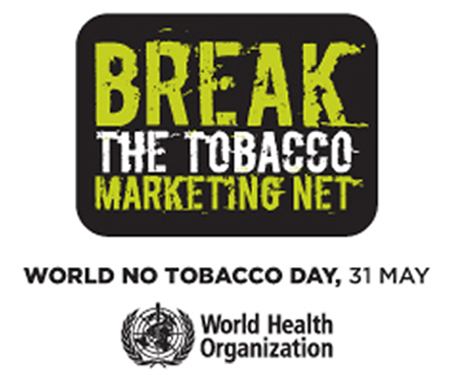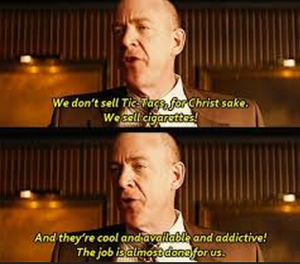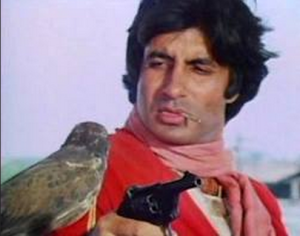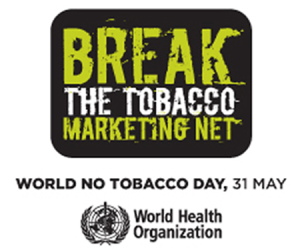The article is written by Laboni Bhakta, a student of GNLU.
SURROGATE ADVERTISING
Surrogate advertising in the literal sense means –duplicating of brand image of one product extensively in order to promote the same brand. It’s a kind of a disguise which duplicate brand tries is to brand recall and not necessarily an exercise in increasing sales such that the surrogate ad tries to either resemble the original product or different product all together established under the original brand product. In India, the trend has been- the various sports/culture/leisure events and activities use liquor brand name or tobacco falls under the ambit of surrogate advertising. One popular case related to this was –
‘A petition filed in 1999 before the High Court of Delhi by the Voluntary Health Association of India, where a ban was sought on the sponsorship of the Indian cricket team by the Wills brand of cigarettes manufactured by ITC. The appearance of the ‘Wills’ logo on the sports apparel worn by the cricketers facilitated the repeated telecasting of that logo to millions of viewers. During the pendency of this petition, ITC voluntarily withdrew its sponsorship of the Indian cricket team in 2001 citing the reason that it did not want to derail the genuine efforts of the government and that it did not want to take undue advantage of its position in the Indian Economy.’– ‘ITC plays Good sport, exits sponsorship’, Hindu Business Line, February 9, 2001.’
Things that are involved in surrogate advertisement:
The concept of Integrated Marketing strategy is adopted by the companies as an approach advertising products on hoardings, banners, TVs, movies and any other medium by which these ad companies can establish a public relation ensuring that through movie or ad they are able to reach the customers.
These are some of the strategies that marketing companies adopt to reach out to the public and attracting potent customers. So basically for example if a company cannot sell cigarettes of a particular brand so they go for brand extension and promote extended products either by hosting t-shirts, caps, key chains or hosting glamorous events. But when you want to buy those extended products in the market, one might not necessarily find it available. And perhaps this is one most adopted “marketing strategy’ to allow one medium’s weakness to be offset by another medium’s strength, with elements synergized to support each other creating a great impact.
National And International Regulations :
- Cigarettes and Other Tobacco Products (Prohibition of Advertisement and Regulation of Trade and Commerce, Production, Supply and Distribution) Act ,2003
The Section 5 of the act prohibits the advertisement of “Tobacco Products” direct and indirect means and to look from a general point of view the tobacco products are not promoted instead the name of the brand of the tobacco product is used to promote other products. So in order to bring it out of the purview of violations of this legislation and its rules, the brand name is withdrawn from the tobacco packets and must be exclusively used in unrelated products.
2.The Cable Television Networks (Regulation) Act, 1995 (“CTNA”)
This was enacted to regulate the operation of cable television networks in india and Rule 7(1) of CTN Rules , enacted under the provisions of Section 22 which provides that “Advertising carried in the cable service shall be so designed as to conform to the laws of the country and should not offend morality, decency and religious susceptibilities of the subscribers”. Rule 7(2)(viii)(a) provides that, “No advertisement shall be permitted which promotes directly or indirectly production, sale or consumption of cigarettes, tobacco products, wine, alcohol, liquor or other intoxicants”
3. The Advertising Standards Council of India (“ASCI”): The ASCI is a voluntary self-regulation council, which has drawn up a Code of Conduct to control the content of advertisements with a view to achieve fair advertising practices. The Code applies to all forms of advertisement, that is, to newspapers, magazines, television, radio, cinema and posters, amongst others. Clause 6 of the Code provides that advertisement of products for which advertising has been restricted should not circumvent the restriction by purporting to be advertisements for other products, the advertising for which is not prohibited. This clause also lays down the criteria for deciding whether an advertisement is indirect advertisement.
4. Framework Convention on Tobacco Control (FCTC): India ratified the Convention on 5th Feb. 2004 and the Convention came into force on 27th Feb. 2005. The convention seeks to protect present and future generations from devastating health, social, environmental and economic consequences of tobacco consumption and exposure to tobacco smoke by providing a framework for tobacco control measures.
Article 1. Definitions :
“Tobacco Advertising and Promotion” means any form of commercial communication, recommendation or action with the aim, effect or likely effect of promoting a tobacco product or tobacco use either directly or indirectly;
“Tobacco Sponsorship” means any form of contribution to any event, activity or individual with the aim, effect or likely effect of promoting a tobacco product or tobacco use either directly or indirectly;
Article 13 of the convention is titled as Tobacco advertising, promotion and sponsorship. This article recognizes the fact that a comprehensive ban is necessary and imperative. The framework gives the parties the freedom to introduce a comprehensive legislation banning all tobacco advertising, promotion and sponsorship in accordance with the constitutional principles of the parties. The time limit granted to the members is 5 years from the date of the convention coming into force. For India the convention came into force on 5th Feb.2004. The parties are also encouraged to go beyond the convention obligations and implement appropriate measures for achieving the objective.
Plain packaging of cigarette packets
Films and Ads have a huge impact on the lives of the youth, Labour Attorney-General, Nicola Roxon had argued “Plain packaging means that the glamour is gone from smoking and cigarettes are now exposed for what they are: killer products that destroy thousands of Australian families.” –this was the famous case which created a lot of hue and cry when the Australian Parliament passed the Tobacco Plain Packaging Act 2011 in the month of November and it was supported by all major political parties.
On December 1, 2012 Australia was the first country in the world to pass this Act to regulate the retail packaging and appearance of tobacco products, with the emblem of plain, olive-coloured packaging and appearance of tobacco products emblazoned with public health warnings and graphic images of smoking related diseases with the aim to improve public health by discouraging people from smoking or using tobacco products.
Portrayal in Movies
Movies however have shown disclaimer in English and in regional language but however, the disclaimers at the start of a film are not likely to compete with the kind of glamorization of smoking that can occur during the film itself.
There are Asian movies which typically has negative influence having a typical direct appeal to a young adult audience like “Love in a Puff” about a young smoking couple falling in love where main characters meet while smoking, which in a way have direct appeal on young adult audience. In Bollywood , smoking has been a style accessory with the arrival of Amitabh Bachan in movies more or less depicted him as rebellion but a man of mission justice in Coolie and Sholay and ‘bidi’ with time became a part of Bachan persona.

“…….can’t get into rock music without smokes and dope”
Youngsters feel that cigarette brands are not displayed in movies. They point out that rather than the characters, it’s the brand that the actor smokes off-screen that is likely to have a greater impact.
“it does impress people … I am smoking SRK’s (Shahrukh Khan’s) cigarette brand”
Policy initiatives to limit the use of cigarette smoking or tobacco consumption
In view of the findings, the following policies need to be adopted by the Indian film industry to reduce the influence of tobacco portrayal in movies:
1. Modify the Indian rating guidelines eliminating the most tobacco use from youth oriented U (Universal) and U/A (Universal adult) movies through working with and encouraging the entertainment industry to adopt strict measures for tobacco portrayal.
2. Certify No Pay-Offs: Every film should post a certificate in the credits at the end of the movie declaring that nobody on the production accepted anything of value from any tobacco company, its agents or fronts.
3. Ban Sponsorship of Film Events: Media and film companies should stop supporting events that are sponsored by tobacco companies.
4. Run Strong Anti-Smoking Ads: Producers and exhibitors should run strong anti-smoking ads, that are not produced or sponsored by tobacco companies, before and during the interval of a film with any tobacco presence in it. Preferably, the actors who are shown smoking in the film should be used to persuade viewers against smoking.
5. Stop Identifying Tobacco Brands: Tobacco brands should not be shown in scenes – they are unnecessary.
6. Rate any Smoking Movie “A”: The Censor Board should be encouraged to give an adult rating to movies that depict smoking. This would put pressure on producers to stop unnecessary depiction of smoking.
7. Television warning: Encourage broadcasters to run a health warning message if the movie contains tobacco consumption.
Analysis
The problem is not with the law or lacunae as to –why a certain regulations or law had been able to be abided by everyone?
THE TRUE COST OF SMOKING
It seems according to WHO that, tobacco use causes about five million global deaths each year and if the current smoking patterns continue, it will cause some 10 million deaths each year by 2020 and half of the current smokers (about 650 million people) will eventually be killed by tobacco ( in survey report made by WHO).
The greater the rate of consumption , the opportunity cost of a pack of cigarettes would be greater for individuals in the age group 18-24 because they are sacrificing longer life expectancy and hence, potential earnings in the future (opportunity cost includes : education, jobs, health ) .
The problem with the youth is that always associate smoking either as ‘Stress buster’ or a method to enter into ‘social talks’. Of course there are parameters like increase in taxation which would preferably decrease the percentage of people smoking. Despite the legal implementation however did not prove to have decreased the smoking rate.
In a judgement given by SC court passing an order to control brand recalling direct or indirect way like reducing the size of the hoarding, display of statutory warnings but despite of all these rules, the business companies selling cigarettes are trying hard to promote the brand by indirect advertising to make up the losses caused due to the less sell of tobacco. This is the area where the judicial system has failed to work upon . Thus the business companies are adopting more subtle ways to go for Brand Recalling (only to make up the losses).
http://www.youtube.com/watch?v=B-sE5RodJaU (A survey made by a U.K foundation on tobacco control how people are responding to looks and not judging the consequences of smoking)
this interview were people were given choices to choose between a branded cigarettes and a ‘Logo-free, drab brown plain cigarette’ packets which has been made mandatory in Australia since 2012. Surprisingly, the people are choosing to go for the latter because of its outlook and it’s sophisticated look with no brand name. So in a way, the marketing strategy of these business tobacco companies are taking subtle ways abiding by laws but still keep on winning the ‘lungs’ of young generation.
After the Australian case, the plain packaging has been made a mandate in countries including India but this does not mean that battle is won but the war is still not over. The problem lies that there are deceptive ways to adulterate the brand naming and trademarks
(like signs, symbols, fonts, colours which also attracts the mind of young people especially) which also needs to be brought into the picture to regulate the tobacco control sell.
The probable problem which likely to arise due to plain packaging are and the TRIPS agreements to deal with same. –
– Some of the fake companies may adopt deceptive means to copy the packing thus and go on to compromise with the quality of the product (cigarette) sold.
– The countries who are selling the ‘Plain Packaged Cigarette’ must comply with patent laws by signing the TRIPS Agreement. Where the member country has to comply with fair use of descriptive terms provided that such exceptions take account of the legitimate interests of the owner of the trademark and of third parties.
– There should not be any obstacle to apply for registration of the trademark
– The owner of a registered trademark shall be given the exclusive right to prevent all third parties not having the owner’s consent from using in the course of trade identical or similar signs for goods and services which are identical or similar to those in respect of which the trademark is registered where such use would result in a likelihood of confusion.
– The use of a trademarks in the course of trade shall not be unjustifiably encumbered by special requirements, such as….use in a special form or use in a manner detrimental to it’s capability to distinguish te goods or services of one undertaking from those of other undertakings .
TRIPS agreement Issues
When it comes to plain packaging and looking from an international intellectual property angle , the issue is whether plain packaging laws and regulations( which vary) violate the TRIPS agreement is violated .
It is being argued vehemently that plain packaging may increase illicit trade in tobacco , in part because it makes cheaper to produce packs (for any brand).
The countries are using variety of regulatory tools to reduce the levels of tobacco consumption. Some of these countries like Uruguay have put in place a series of measures aimed at reducing its overall smoking rate, which includes the provision requiring health warnings to cover 80 percent of the packaging which was subsequently challenged by the Phillips Morris Company under a BIT between Uruguay and Switzerland. In the dispute, it was argued by the Phillips Morris trademarks to the extent that they are allegedly expropriated under the BIT and thus Uruguayan measures donot , from a packing measures, which involve the lamination of figurative or logo marks from the packaging of the cigarettes.
Thus, overall the core intention will be to “regulate the retail packaging and appearance of tobacco products.”
Problem with India
With the above objective, Rule 2 of the COPTA sets out the use of a name or brand of Tobacco Products for marketing, promoting or advertising other products would constitute a form “indirect advertisement”.
The problem lies at such a juncture that a product once sold, whether advertisement ban has any sizeable effect and on the other hand there is this argument coming up that of the government is so keen in ‘refining’ the society by curtailing sale by making laws but failing in the attempt of implementing it. The problem is the more the regulations are framed the more subtle ways of marketing strategies are adoptive in such a way which are both manipulating and subtle. Thus, the more restrictions are imposed on these surrogate advertising agencies the things will take a reverse turn that the demand pattern for these products may cease to quality driven. In such a scenario, the low price will no more reflect quality.
The advertising of tobacco has been successful in creating a brand image creating an excessive demand of these products. So far there has not been an econometric study carried out which quantitatively confirms whether surrogate advertisements indeed increase the sale of liquor and tobacco. The government as well as the public policy think tanks must come together to take a policy decision based on public opinion to either increase the cost of the price of the product such that it’s beyond the reach of teenage students and even though if the results do not reflect to be impressive then ban it completely!
The problem is no matter how many great laws and regulations are there but half of our population in India is illiterate or they do not have any idea that such laws existence neither they are aware of it. To make the awareness at the grass root problem, certain workshops or programmes must be arranged and campaigns (persistently) as frequently as possible especially in schools where Kids must be given as a part of education (like US does providing sex education or on substance abuse) . So, all these things or programmes must be made a part of the curriculum. Matters which have legal dispute can be brought to the purview of the court but when it comes to implementing it on the society I think only Law itself cannot achieve the public goal, it must also take the help of the , policymakers, NGOs, Human Resource Centres to promote and propagate that how things in TV is a stark contrast to reality.
However off late the cigarette ads have been reduced in India and the Censor Board of India has also instituted stringent regulations on the advertisement companies to show any kind of brand stretching in movies as well, however the saddest and the unfortunate part is liquor related surrogate ads is still now on the run and it seems government has not tightened the ‘reins’ to control the surrogate ads which indirectly promote liquors (which will be discussed about in another article).
 Serato DJ Crack 2025Serato DJ PRO Crack
Serato DJ Crack 2025Serato DJ PRO Crack















 Allow notifications
Allow notifications




Today, many smoking products are coming on the market. Today, advertisements are common in television. There are many products which have been banned from being advertised due to the addictive nature of the product like cigarettes, tobacco, cigar, pipe and e-cigarettes.